220254
UNIT 20
LEARNING AIM A
Single Camera Techniques
Single camera production:
Single camera production is a film-making technique in which one camera is used to film multiple/all the shots and angles.
Benefits:
One of the benefits is it provides a more cinematic feel, it's easier to move around and it's easier to set up in comparison to multi-camera production. It is also allows for more detail/drama to be added in editing.
Drawbacks:
However using single camera technique also means that it can be more time consuming as it requires more close attention to what happened in the previously shot scenes. Also as you only capture one angle for each scene, a lot more editing will be necessary.


Benefits:
One of the benefits is it is quicker as cameras don't need to be adjusted unlike single-camera filming. Also you don't need to shoot multiple takes as the cameras are already placed in different positions.
It is particularly helpful for live events where unexpected events could happen, the cameras are able to capture them.
Multi-camera production:
Multi camera production is when more than one camera/multiple cameras are used to film each scene.

Drawbacks:
It requires time to set up due to the number of equipment, the cameras also have to stay in the same positions they were left in, it is also more expensive due to the increase in equipment and camera directors.

TYPES OF MEDIA PRODUCTION
Documentaries:
Documentaries generally use multi-camera technique, however this varies depending on the budget of the director.
Documentaries tend to use the multi-camera method to be able to capture scenes/the environment from multiple angles and so they can repeat a scene, but show it from different angles. This is evident in documentaries such as David Attenborough's " Blue Planet" amongst others.
TV Dramas:
TV Dramas can use either single or multi-camera production, however multi-camera technique is more widely used as it allows the camera directors to shoot scenes quicker and capture multiple angles in the same scene such as the reactions of all the different characters. Many directors also use the method of cross-shooting (which I used in single-camera filming).This filming technique also helps with the cinematic experience.




TYPES OF MEDIA PRODUCTION
YouTube Vlog:
YouTube vlogs use single-camera technique as it is one person filming their own lives(point of view) and doesn't require multiple cameras, as only one person is involved. Vlogs don't require multiple cameras to shoot different perspectives, but instead only one perspective.
Soaps(UK) and Sitcoms?(US):
Soaps generally use multi-camera shooting techniques for the same reasons as tv dramas, and as it helps to add to the melodramatic storylines and to get better shots of the actors. However single-cameras may be used for shows that have been around for a long time.* Multi-camera technique is used as it is more efficient and requires less editing to be done to keep the show as live as possible.
Sitcoms also frequently use the multi-camera filming setup, such as those which have a live-audience, to record from multiple perspectives.
Some examples of shows which record using the single-camera technique includes: 'Modern Family' and 'The Office'. Examples that use multi-camera technique includes 'Friends' and 'Fresh Prince of Bel-Air'




TYPES OF MEDIA PRODUCTION
Music Video:
Music videos are generally shot using the single-camera technique. This is due to the risk of multiple cameras clashing with each other when shooting one shot. Also music videos tend to use a point of view shot which uses one camera director in front of the subject. Also, using single-camera setups can be used in diverse environments as the cameras do not need be positioned in a specific way*. However music videos that do utilise the multi-camera shooting technique are ones where filming takes place in a filming studio or where there is a performance to be recorded.
Advertisements:
Advertisements are usually shot using the single-camera technique. This is because the camera has to often move during the shooting and it provides a more cinematic feel.* Single-camera shooting also helps achieve a professional look for the adverts.
https://dmakproductions.com/blog/utilizing-single-camera-versus-multi-cam-in-your-video-production *
Multiple cameras may clash when shooting each shot
TYPES OF MEDIA PRODUCTION
Sports Events:
Sports events are normally shot with multi-cameras as they are live, so when unexpected events happen, those moments are able to be captured (and from multiple angles). Also multiple cameras are needed due to the live commentary that is happening as the games are being carried out. Also cameras are needed to be placed above the action (aerial camera systems).
Source:
https://www.aerialcamerasystems.com/blog/18cfe5141df5


MOVEMENTS
TRACKING: (DOLLYING)
Tracking is when the camera can be placed on a track and moves up or down, left or right as it follows the subject's movements.
The purpose of a tracking shot is to allow the viewer to feel present in the scene and helps with the immersive experience.
TILTING:
Tilting is when the camera is kept in a stationary position and moves up or down(only).
The purpose of this movement is to help with establishing the scene.
CAMERA TECHNIQUES
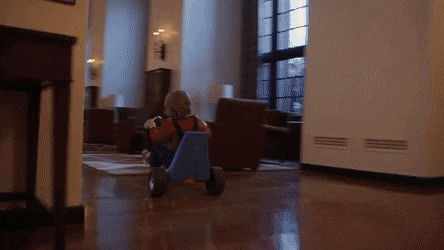
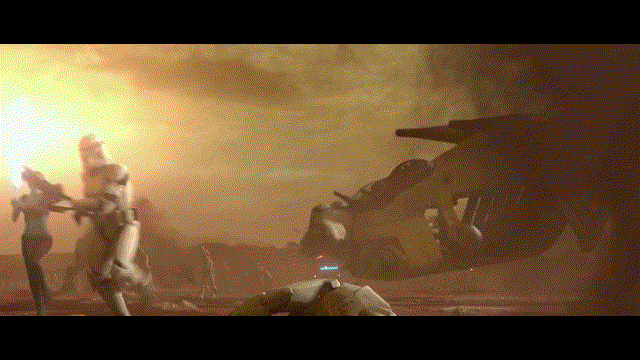
ZOOMING
Zooming is the camera lens moving in or out of the subject, whilst the camera remains stationary.
Zooming allows the viewers to see the finer details that are significant and shifts their attention.

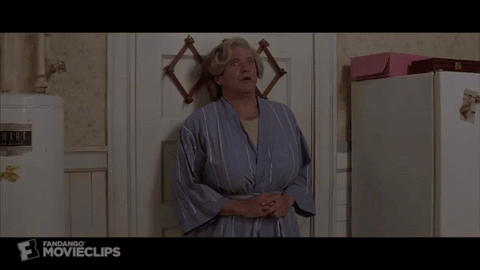
PANNING:
The camera moves left or right only whilst remaining in a stationary position.
Panning reveals a larger space inside the frame, it also shows movement or to show a difference in scenes.
STEADICAM:
The camera is physically attached to the camera operator and follows a subjects movement.
As the steadicam isolates the camera operator's movement the shot looks smooth and controlled it stabilises the shot.


HANDHELD:
The camera is no mounted and therefore has a jerky action. This creates a sense of realism and excitement for the viewer. As the movement is very rough and shaky, it helps with immersion in the scene and thrill.
CAMERA TECHNIQUES
FRAMING
EXTREME LONG SHOT: ELS
This is when the focus is on the location and there is no subject or the subject is far away.
The purpose of this is to show the setting of where the scene is taking place or to show the subject from a distance.


LONG SHOT: LS
A long shot is when the cameras focus is on the subjects whole body, with the subject framed head to toe.
The purpose of a long shot is to center your audience in the scenes they're about to witness.
MEDIUM LONG SHOT: MLS
The cameras focus is on the subjects body-framed from the knees up.
This shot can be used to show the subject's pose to show a subject in relation to the setting or to create a distinctive frame around the character.


MID SHOT:
A mid shot is when the camera focuses on the subject's whole torso, with the subject framed head to waist.
The purpose of this shot is to help enhance body language and draws attention to both the character and their surroundings.
MEDIUM CLOSE UP: MCU
The cameras focus is on the subjects upper torso, with the subject framed head to chest.
This frame shows both the subjects emotions and expressions, aswell as the background


CLOSE UP: CU
The camera's focus is on the subject's profile, with the subject framed head to shoulders.
The close up helps accentuate the subjects reaction.
BIG CLOSE UP: BCU
The camera's focused on the subjects facial expressions, with the subject framed eyes to mouth.
This allows the viewers to see details in the subject's face they


EXTREME CLOSE UP: ECU
The camera focuses on the subject's facial elements, with specific features framed.
This helps add drama and creates heightened feeling.
CAMERA TECHNIQUES
ANGLES/SHOTS
BIRDS EYE VIEW:
This is a shot taken from directly above, looking down onto the action or subject.
This shot gives an overall establishing shot of the scene or setting.
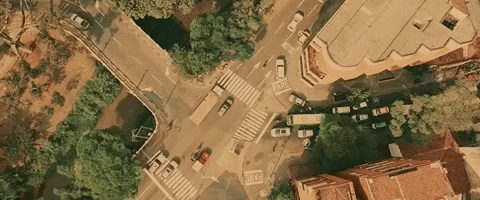


WORMS EYE VIEW:
This is the opposite of the birds eye view shot, and is taken from directly below, looking up to the action or a point of interest.
The point of this shot can be to make the subject look taller/larger and intimidating, whilst making the viewer seem smaller.
HIGH/LOW ANGLE:
High: A shot taken from diagonally above the action or point of interest, looking down.
Low: A shot taken from diagonally below the action/point of interest, looking up.
These angles either make the subject seem dominant, superior(low) or inferior(high)

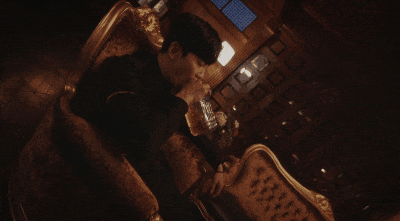

CANTED ANGLE:
A canted angle is an unbalanced shot where the camera is placed at an irregular/slanted angle.
This angle helps portray unease or disorientation in a scene.
WIDE ANGLE:
This is a shot taken from a distance in order to frame more than two subjects at the same time.
This helps viewers to see other characters or the different reactions of multiple characters in the same frame and allows them to see more of the setting.


TWO SHOT:
This is a shot taken at eye level which frames two subjects in the same place at the same time.
It is used to show the emotional reactions of the subjects/showcases the reactions.
OVER THE SHOULDER: OTS
A shot taken from behind a subject's shoulder, engaging in conversation with one another.
This shot shows viewers the characters interactions with each other and actively involves the viewers.


POINT OF VIEW: POV
The POV shot is take from a subjects line of sight, allowing the audience to see what the subject sees and puts the viewers into the subject's shoes.
ESTABLISHING SHOT:
This shot is taken from an extreme distance, and always occurs at the start of the scene.
The viewer is able to see the location of where the action takes place

SETTINGS
FOCUS:
Focus is the process of capturing the subject in a clear and sharp image and it can be done either manually or automatically by the camera.
Photography: Single-point auto-focus- it allows you to be precise and in control of the focal point.
Video: Manual focus-as with auto-focus the lens struggles to focus as the subject is moving, in low light, manual focus can be faster and more precise.

Here are some photos and a video I took, trying to keep the subject in focus


Medium long shot
Mid shot


Big Close Up
Medium close up

Extreme close up
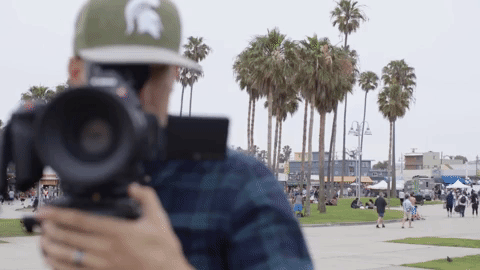


f/22

f/14

f/9.0

f/5.6

f/3.5


f/18

f/11

f/7.1

f/4.5
APERTURE:
Aperture is the adjustable lens opening that controls the amount of light that is allowed into the camera.
When you use the shutter release button, a hole opens up which allows your cameras image sensor to catch a glimpse of the scene you're capturing.
the larger the hole, the more light that enters. The smaller the hole, the less light enters.
Aperture is measured in 'F-STOPS'.
Moving from one f-stop to the next doubles/halves the opening of your lens.
Large apertures(lots of light)=small f/stop numbers and smaller apertures(less light) have larger f/stop numbers.

f/2.8

f/2.2

f/1.8
SHUTTER SPEED:
Shutter speed is the speed at which the shutter of the camera closes. In photography, shutter speed is used to capture images with motion blur and to freeze movements.
Shutter speed is measured in seconds or fractions of seconds. The bigger the denominator, the faster the speed.
Faster shutter speeds are used to capture objects that move rapidly.
When using a slow shutter speed(slower than 1/60) a tripod or image stabilisation due to the camera shake.


1/4



1/8

1/15
1/30



1/60
1/125

1/500

1/250
ISO:
ISO is the measuring of a digital camera sensor's and how sensitive it is to light.
Lower ISO means less sensitivity to light, higher ISO means more sensitivity.
Each camera has a range of ISO values with the lowest number as the base ISO.
ISO 100
ISO 200
ISO 400
ISO 800
ISO 1600
ISO 3200
FOCAL LENGTH:
The focal length tells us the angle of view of a lens (how much of the scene in front of us a lens captures), and how large subjects in the frame appear.
The longer the focal length, the narrower its angle of view and lenses with short focal lengths take in a much wide angle of view-and look smaller in the frame than they do to our eye.




ISO 6400
18mm
28mm
37mm

50mm

200mm

80mm

300mm

135mm
CAMERA TECHNIQUES VIDEO
CORE ASSESSMENT
US SITCOM: 'The Office'
Most sitcoms use multi-camera production, however 'The Office' is a popular example of a sitcom which uses single-camera production. In this show, the characters often break the fourth wall and use direct address(involving the audience in the scenes) which makes the show feel more authentic.
Some other comedies filmed using the single-camera technique include 'Modern Family' and 'Brooklyn Nine Nine'.
This scene opens with a character, then uses tracking/dollying to pan to the rest of the office showing what the other characters are doing. The camera then focuses onto the subject (Dwight) and he 'shows the audience' what he's doing through direct address (through the voiceover). Through his facial gestures and expressions, accompanied by silence, as he shows what his plan is, the audience can infer that some trouble is going to arise. This scene also actively engages the audience due to the camera being handheld. His contradictory words and actions confuse the viewers.
The handheld camera is then used, along with constant zooming to add to the frantic atmosphere and adds to the sense of realism, which is effective as it makes the audience feel as if they are there with them, caught up in the action. The use of handheld camera signifies that this is a single-camera production.
A wide angle is used to capture each of the different reactions of all the characters present and how different personalities react to danger (perhaps trying to replicate how most people would react to that situation in real life).
The close-ups help emphasise the fear felt by each character. The camera zooms onto each character, and at 3:17 a wide angle is used to show the different reactions and thoughts of each character present in the frame. The different close-ups all hint at the genre of comedy that this show represents. Tracking/ dollying is used and allows the audience to feel as if they are involved. At 4:18 minutes, a low angle is used to show how Stanley is weak on the ground, needing help, and shows the audience what Stanley sees in front of him. It also shows which character (Michael) decides to take control.
For each shot/scene, the exposure remains the same as to give the effect of the show being filmed in one take. The aperture is most likely set to f/16 (because we can see that both the foreground are focused but not in deep focus as the characters are constantly moving), with the shutter speed to be set at what I think is around 1/125. The ISO appears to be set at 100-200 due to the set lights.
This scene is filmed with natural light, which is kept constant, with the added effect of the smoke which slightly dims the lighting, in one setting.
















Music Video: Michael Jackson 'Black Or White'
Music videos almost always use single camera techniques as they can be used in diverse environments. Just like this music video which displays scenes in different settings.
However there are many music videos shot using multiple cameras-especially performance videos.
This music video opens with a birds eye view, then transitioning through to a house. This is used to establish the setting/ location and a background story for the music video.
The dark setting shown outside could connote/signify the tense atmosphere. Cross cutting is used to signify that the two events are happening at the same time, and presents the music video as a narrative. At 0:53 a medium close up shows the viewers the boys shock as his father comes to scold him, to which the camera zooms onto his father’s face of anger, instilling a feeling of fear in the audience. At 1:10 the boy’s face is in full focus, with the aperture most likely set at f/1.8.
I think this scene (set in the house) is set at ISO 200 due to the many lights used in the home, with the shutter speed for the opening scenes at 1/250 and aperture most likely at 9.0.
The camera moves from a birds eye view and swiftly cuts to a new setting where an establishing shot is used, and quickly directs the viewers to certain subjects (the lion, the dancers and then a mid-shot to show the man falling from the sky).
A full shot is then used to show the performance section of the music video and show the new style of dance. The camera pans across a studio to yet another setting with different dancers, showing the viewers a new cultural dance and the different costumes. At 3:01 a close up is used to smoothly transition Jackson to a new, busier setting where. The camera zooms out into a wide shot. High and low angles are then used to show horses galloping over the camera, which helps make the scene seem more movie-like/ gives the music video a more cinematic feel.
The changes in brightness levels/lighting (natural lighting) highlight the change of locations and how these scenes were shot in different time intervals despite the music video giving the illusion of these events occurring in the same day.
During these shots I believe the aperture changes, perhaps switching between around f/9- f/3.5 as the cameras focus switches between subjects in the background and foreground.
The wide angle, high angle and full shot from 3:48 draws the viewers’ attention to their precise movements.
From 4:39-4:50, the aperture seems to be around f/7.1 as to keep all the subjects in focus and showing them performing along with the music.(This performance part along with the other performance parts makes it clear that this is a music video(genre).
At 5:18 the camera zooms out to allow a new background, with many different famous monuments/statues, to be edited in. Finally, at 5:29 a continuous close up is used where each face present, seamlessly morphs into the next one, showing inclusion of different ethnicities.
It seems as though this music video uses mainly single camera techniques but has elements of multi-camera techniques to show different angles of the same scene (for example at 3:53) and through the use of the jimmy jib(which is often used in multi-camera productions).
The use of zooming and tracking are commonly used techniques in music videos.
Documentary: 'Simon Reeves in Australia'
Documentaries can use both multi or single camera techniques. Those that use single-camera techniques include observational, participatory documentaries and more.
The clip opens with panning and then zooms out to show the setting and Simon Reeve looking concerned/confused. A straight cut is then used showing the viewers where the problem is, along with a two shot, where the man explains the large area where the fire is spreading. The wide angle at 0:59 shows the helicopter which is going to be used. A close up is then used, with the aperture seeming to be set at f/5.6-f4.5 so the viewers focus more on what he is saying but still being able to see what is in the background.
I believe steadicam is then used to show Simon Reeves getting into the helicopter to show viewers the situation from above.
High angle used to show all the smoke and destruction, the use of this camera technique is as a warning for the viewers and makes the viewers concerned over the wildlife destruction and is possibly used to alert people watching. The extreme longshot also helps show this.
At 1:57 what seems to be an (extreme)high angle shows viewers a large, thick blanket of smoke, as well as at 2:05 where there is a line of fire spreading through the forest, gives viewers a deeper insight on the fire and just how bad it is. These scenes appear to be set around ISO 800 due to the dimming effect of the smoke.
A montage of different angles/ areas of the bush fires are shown to show which areas have been tackled by the helicopters.
At 2:54 the camera zooms onto a building that have been destroyed in the bush fire highlighting the huge impact it has had on the (surrounding) area.
Trucking is used to show a bare and empty land of field, which is perhaps used to contrast the previous scenes of green trees and shock the viewers.
This genre(documentary) is established through the commentary/direct address and the one camera following along with Simon Reeves(in the back of the helicopter). I can infer that only one camera is used as the camera seems to be placed in the same position and shows what is happening from one side of the helicopter.




LEARNING AIM B & C
MUSIC VIDEO TREATMENT
Narrative overview(slide 4) and genre conventions(slide 6)
STORYBOARD
My section of the music video
Music video

SCREENING
